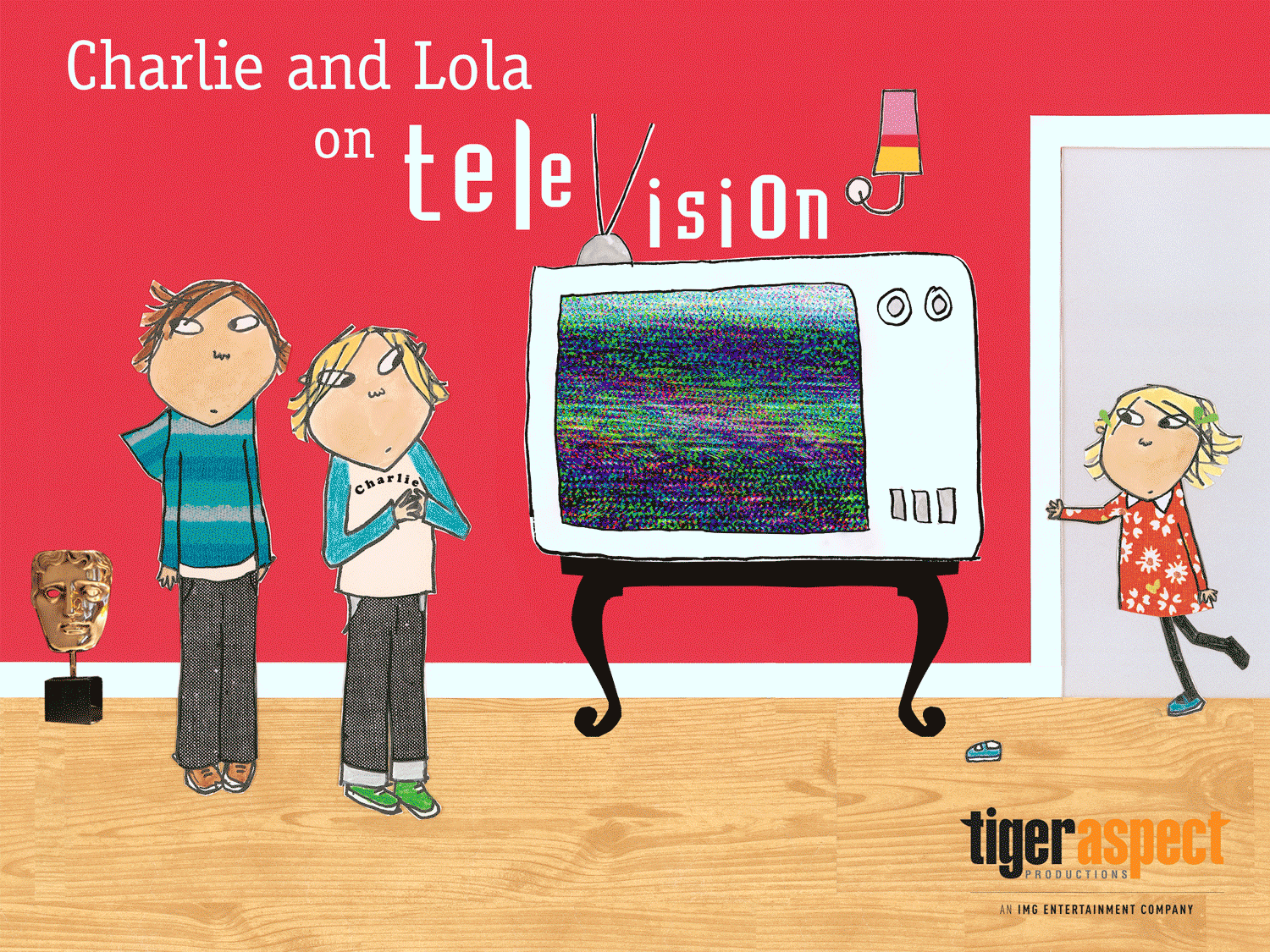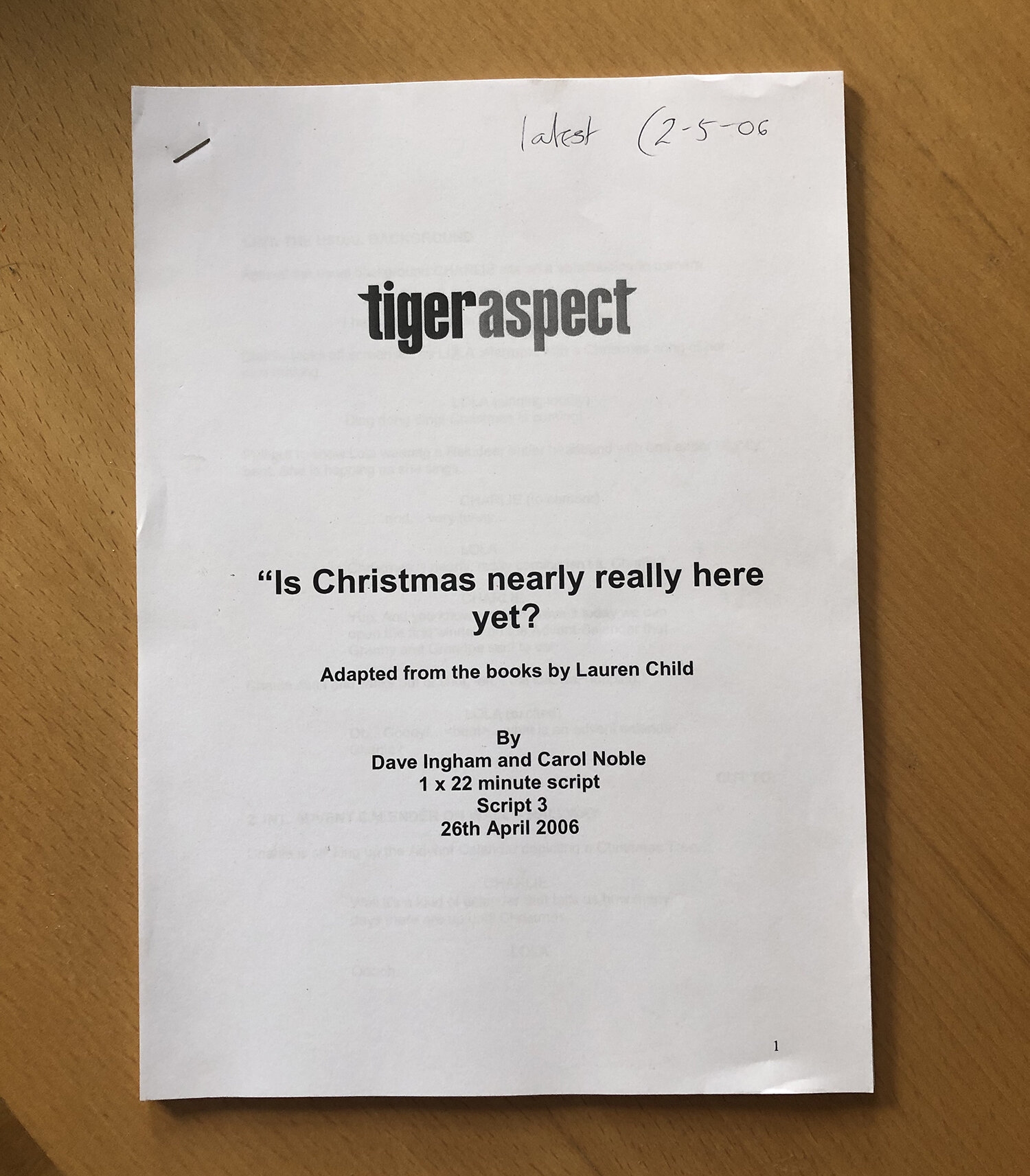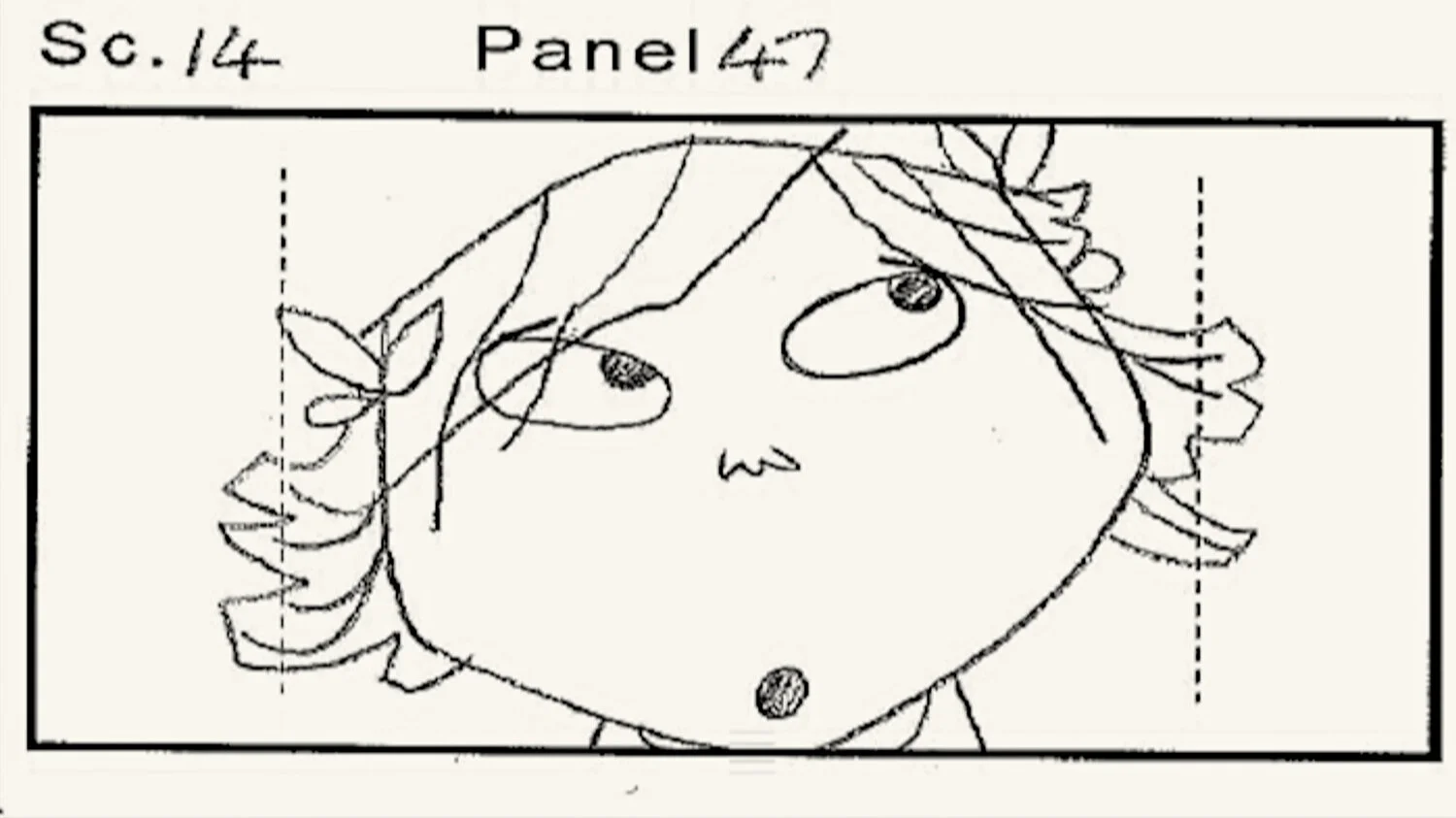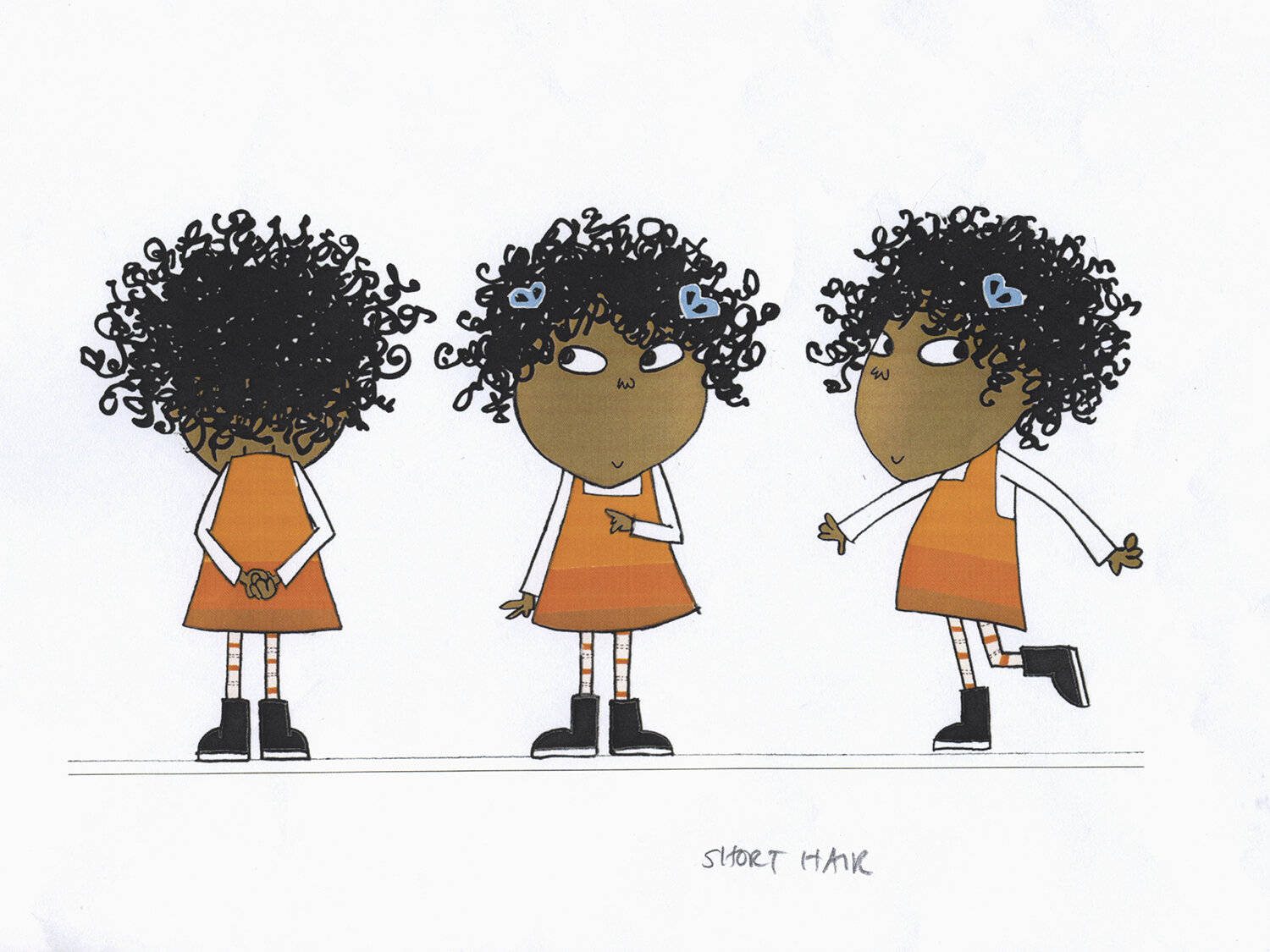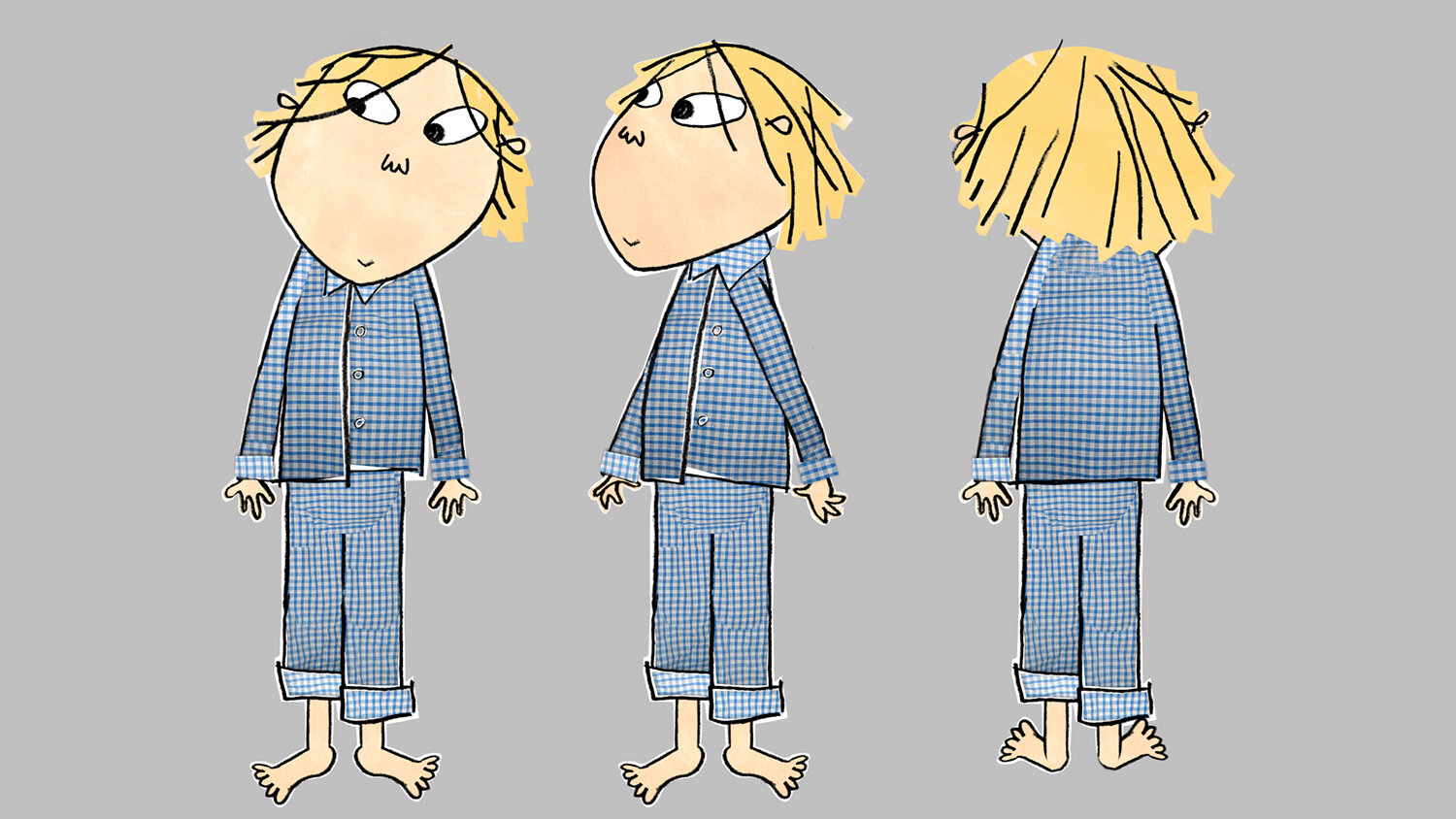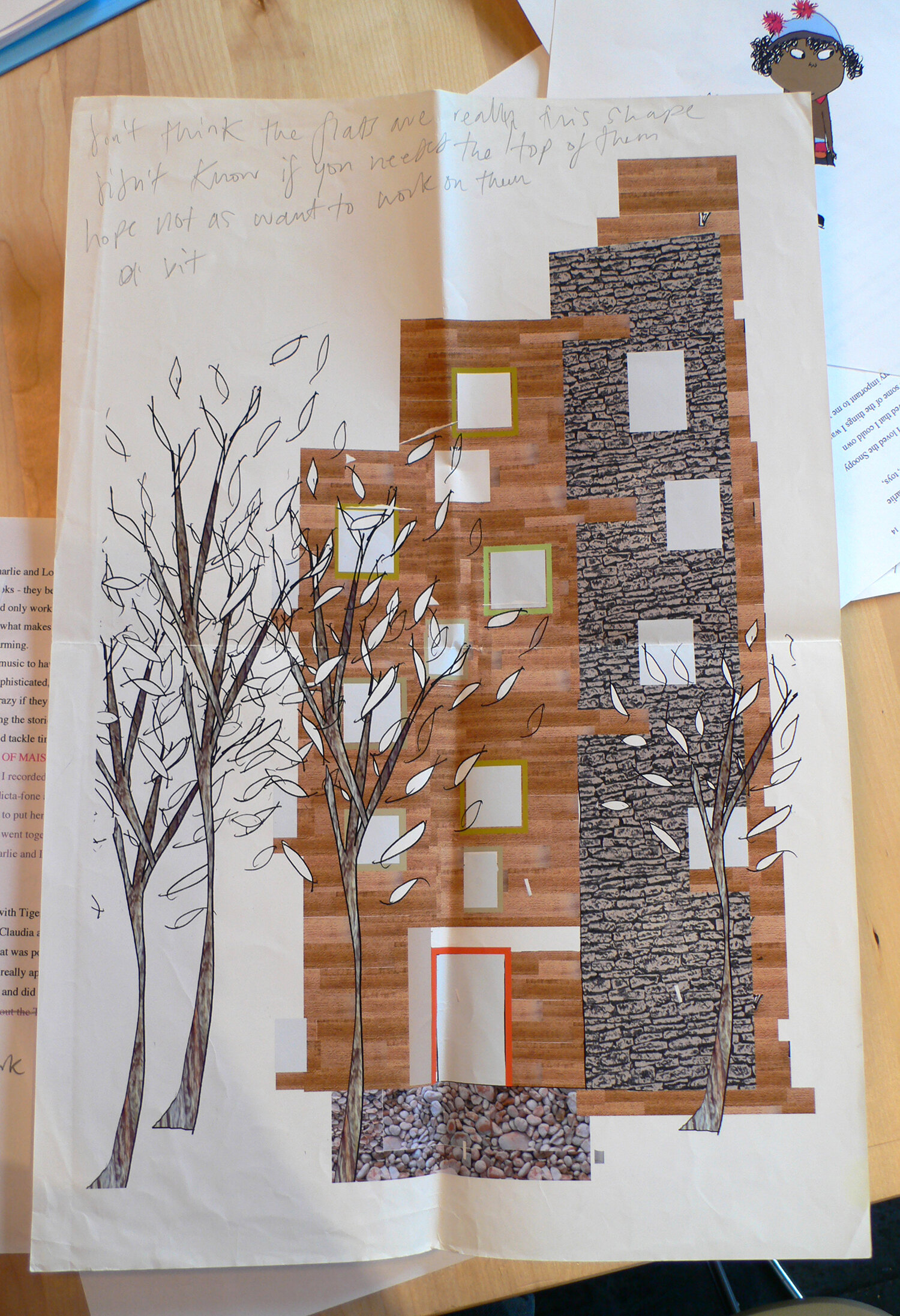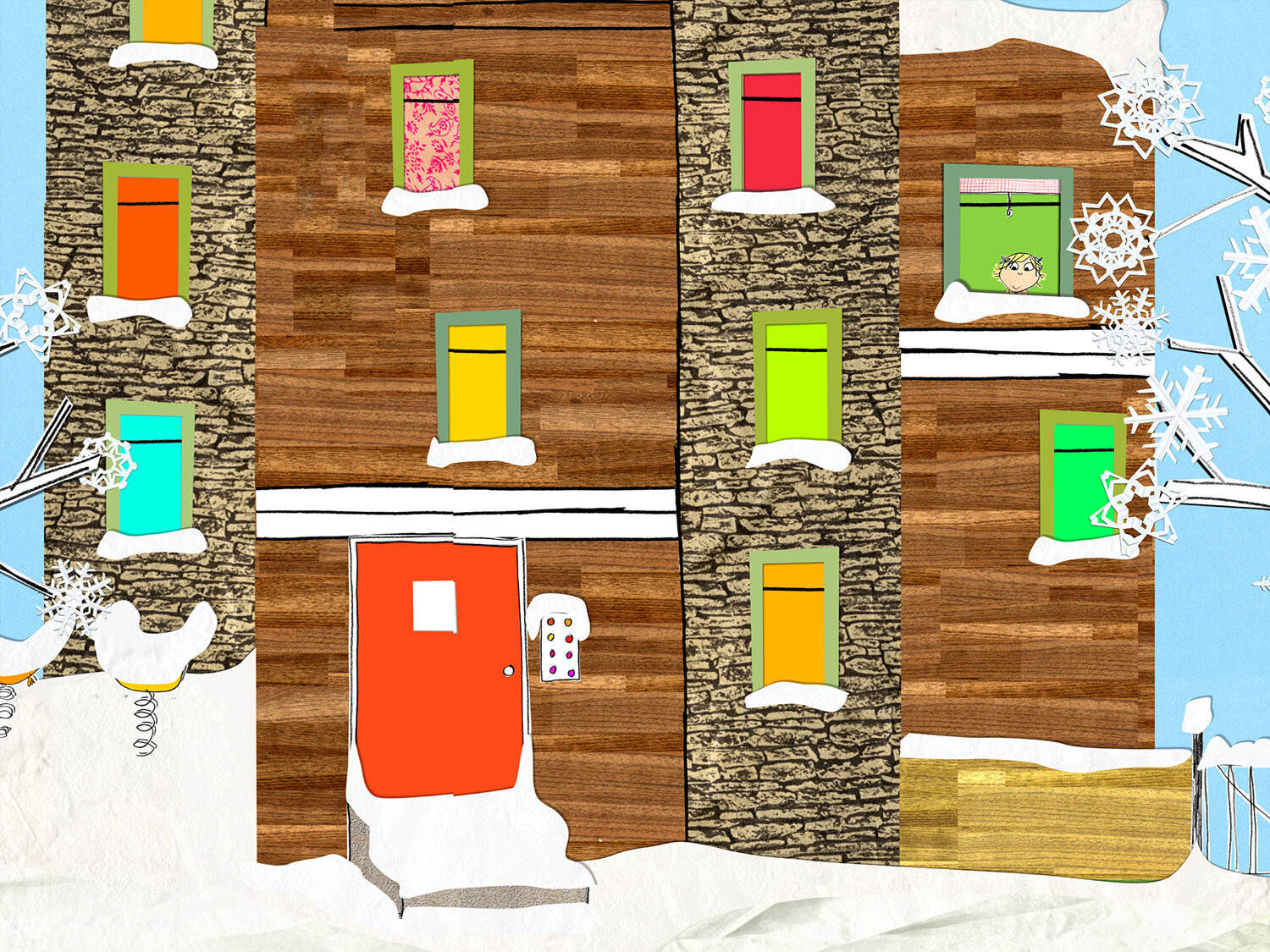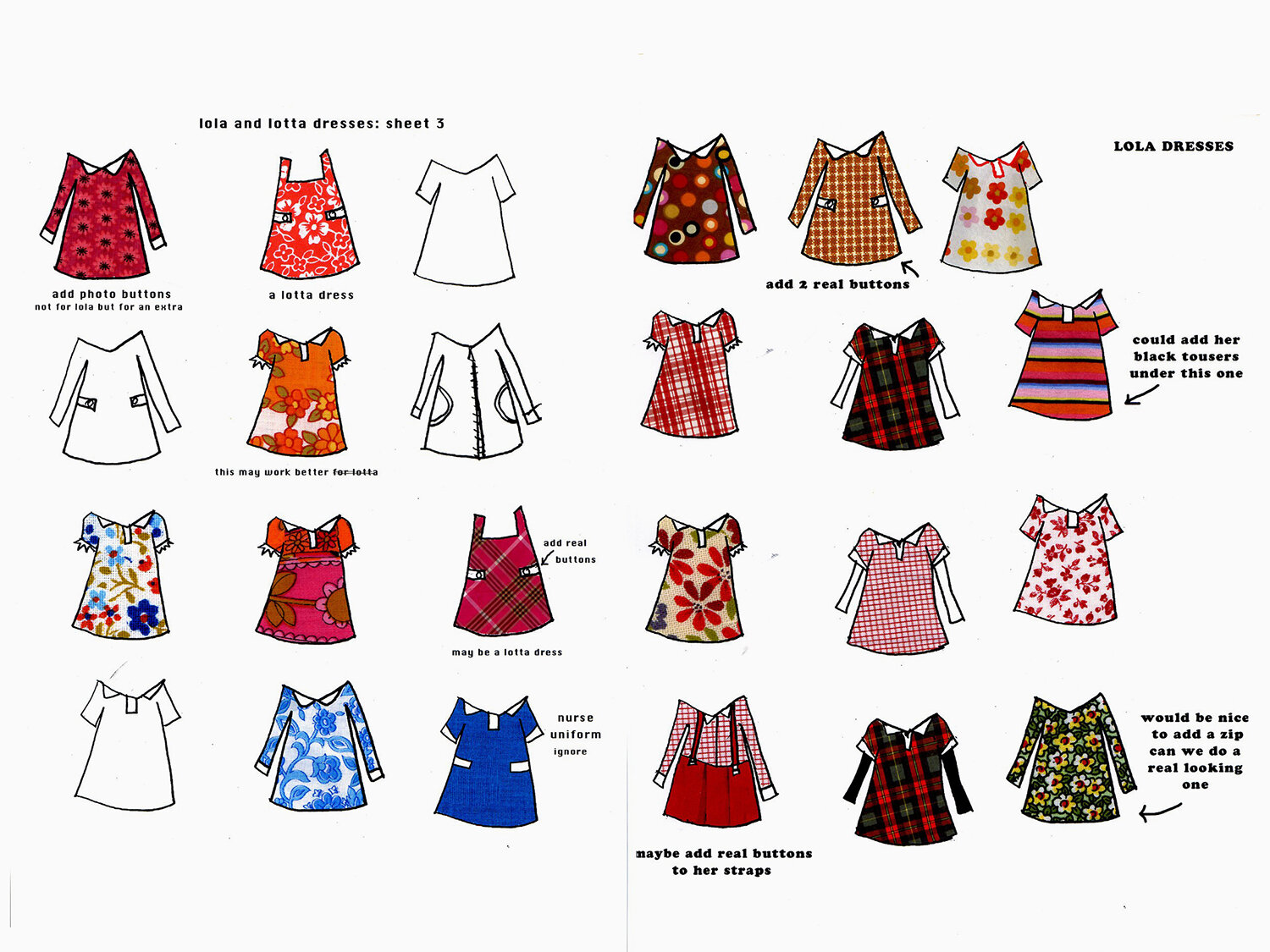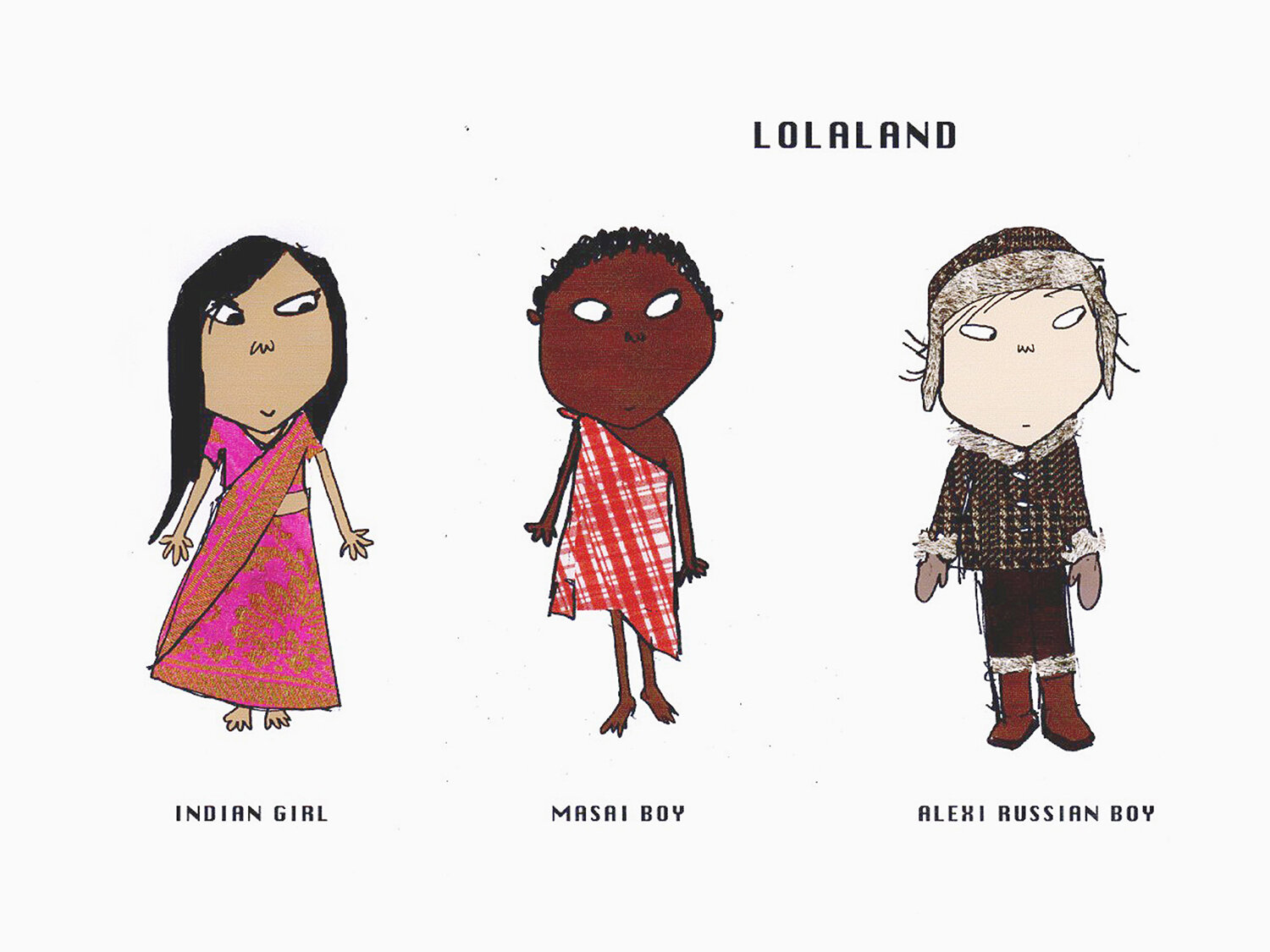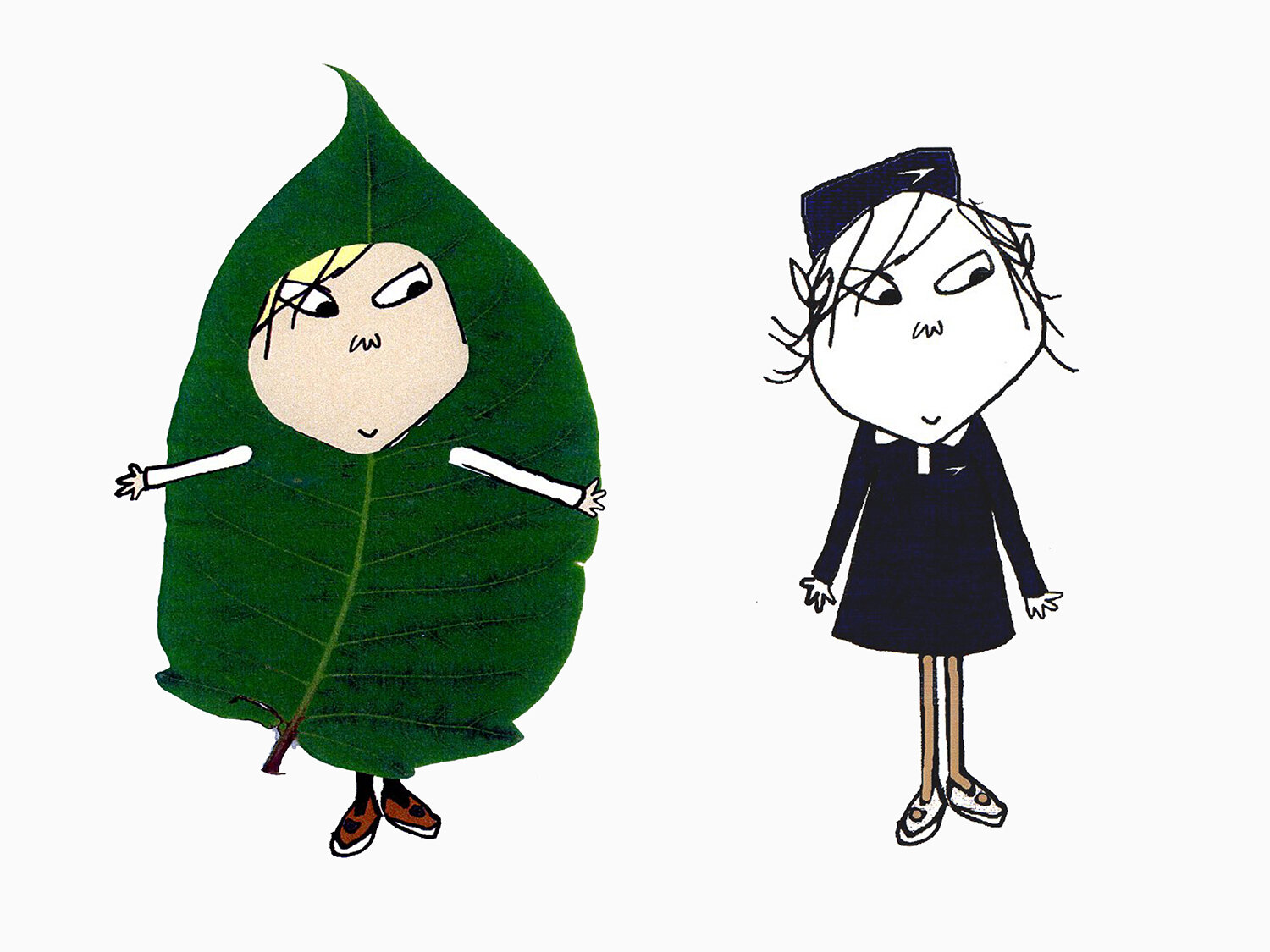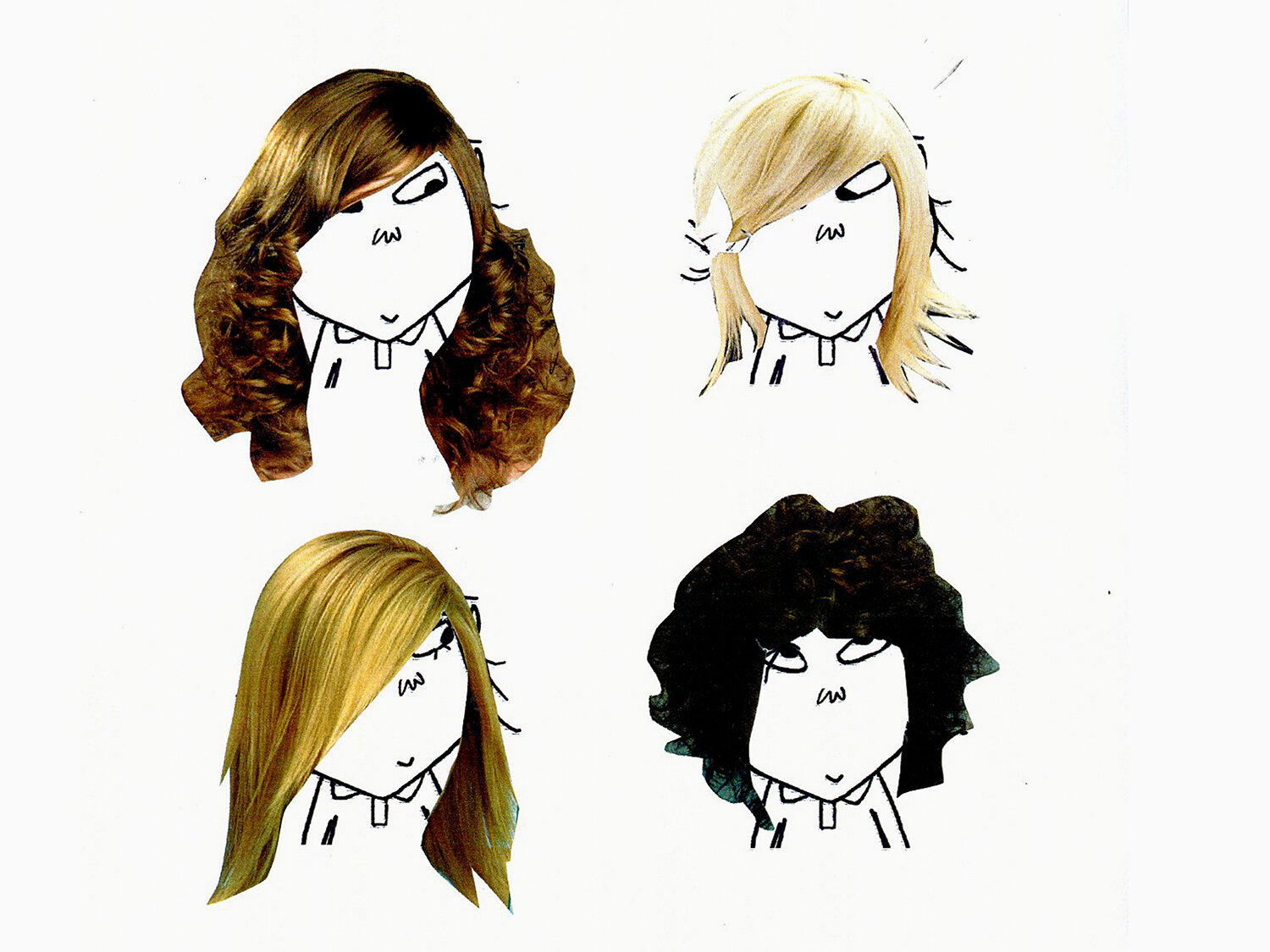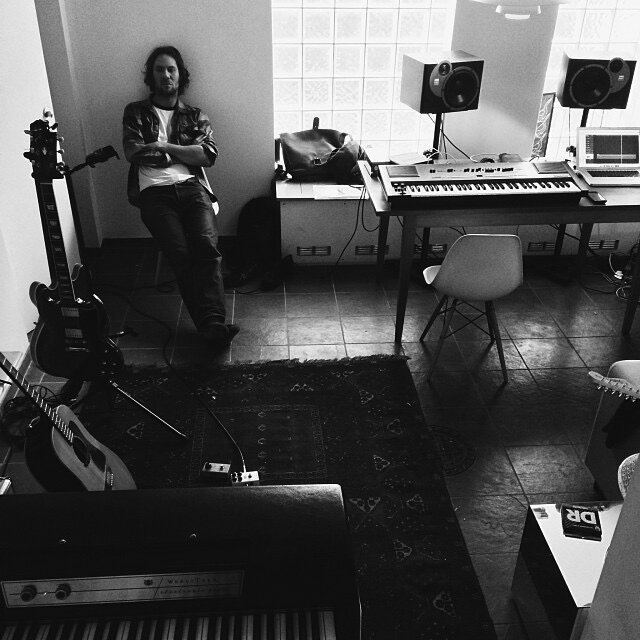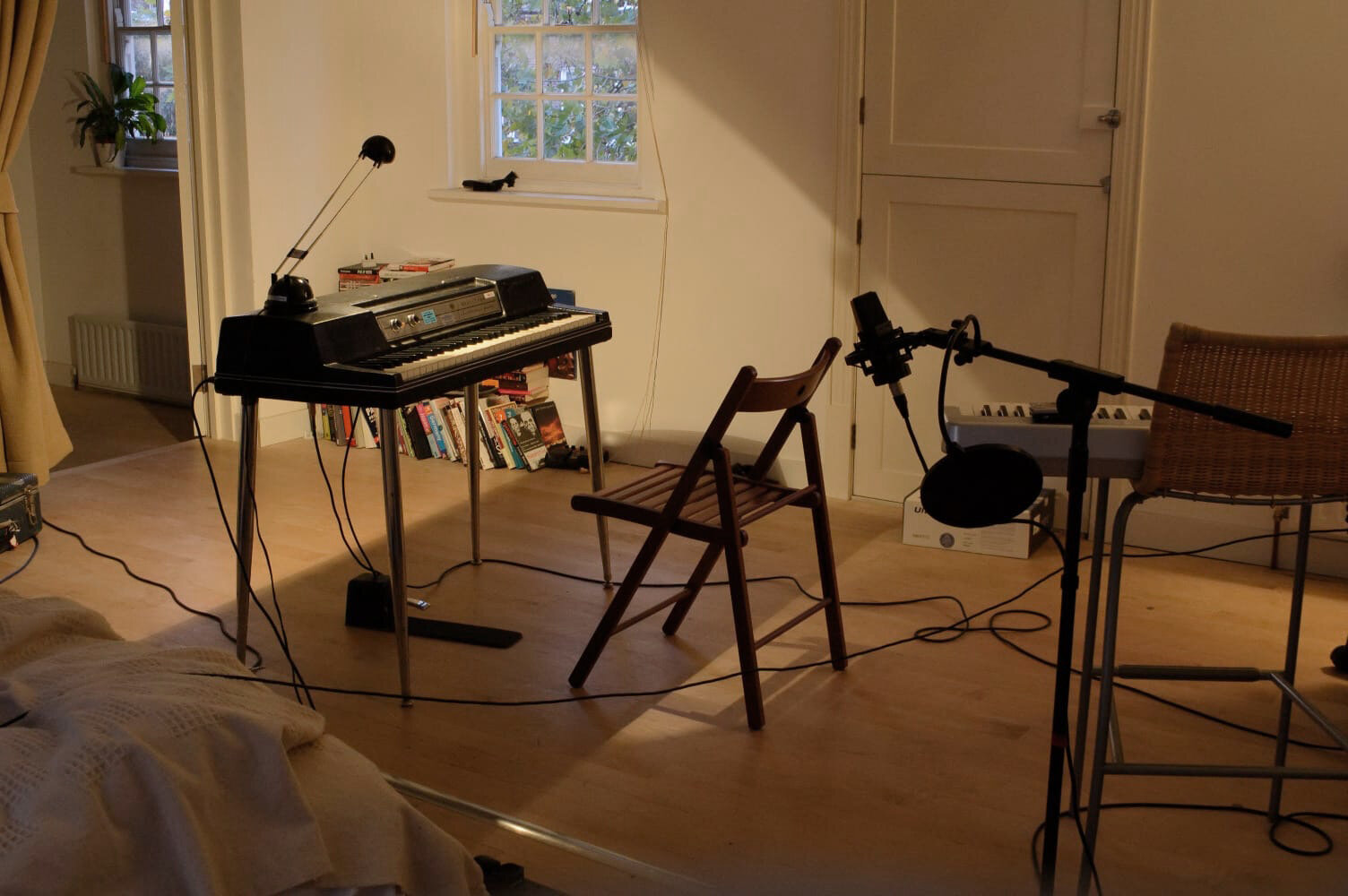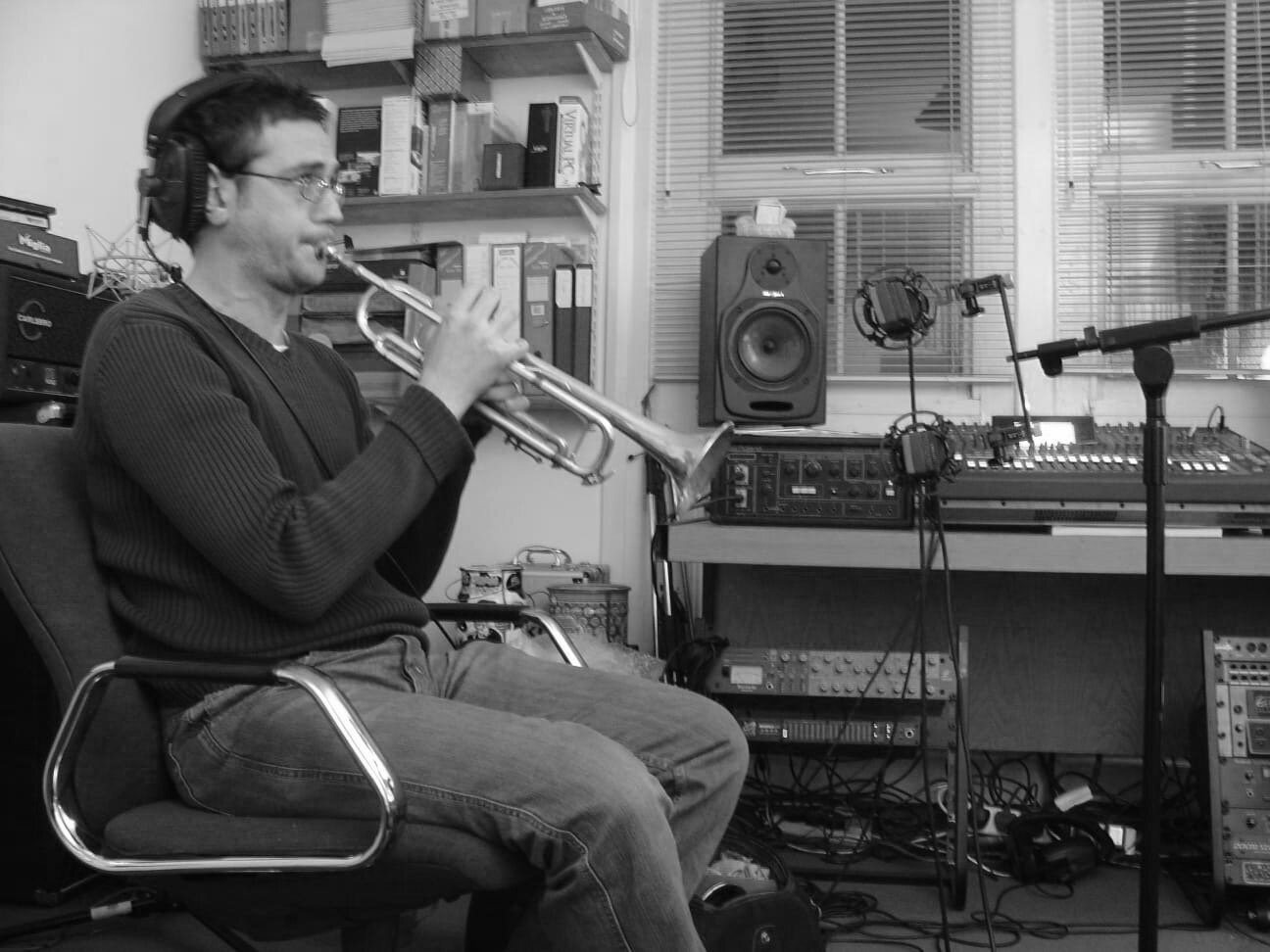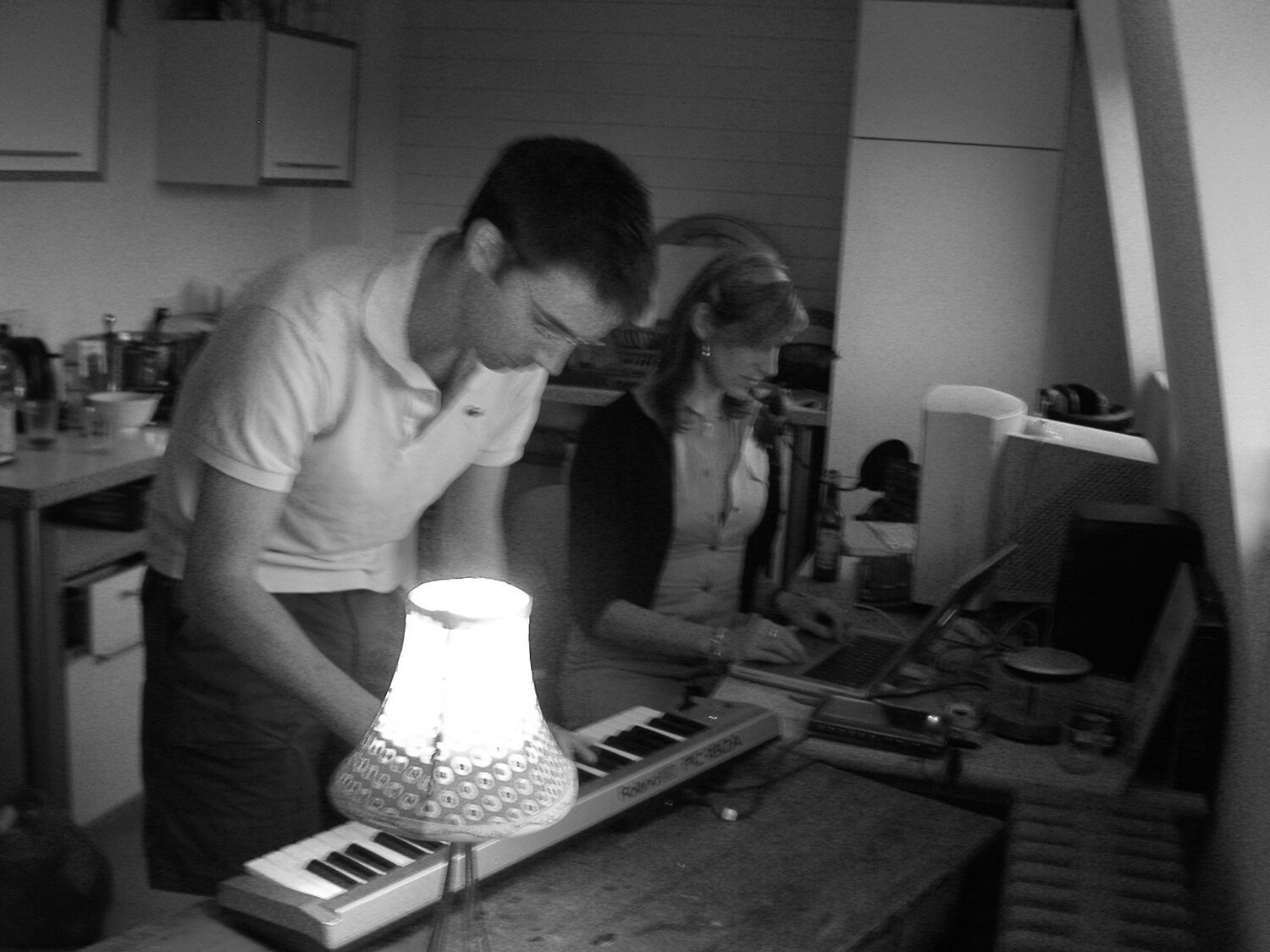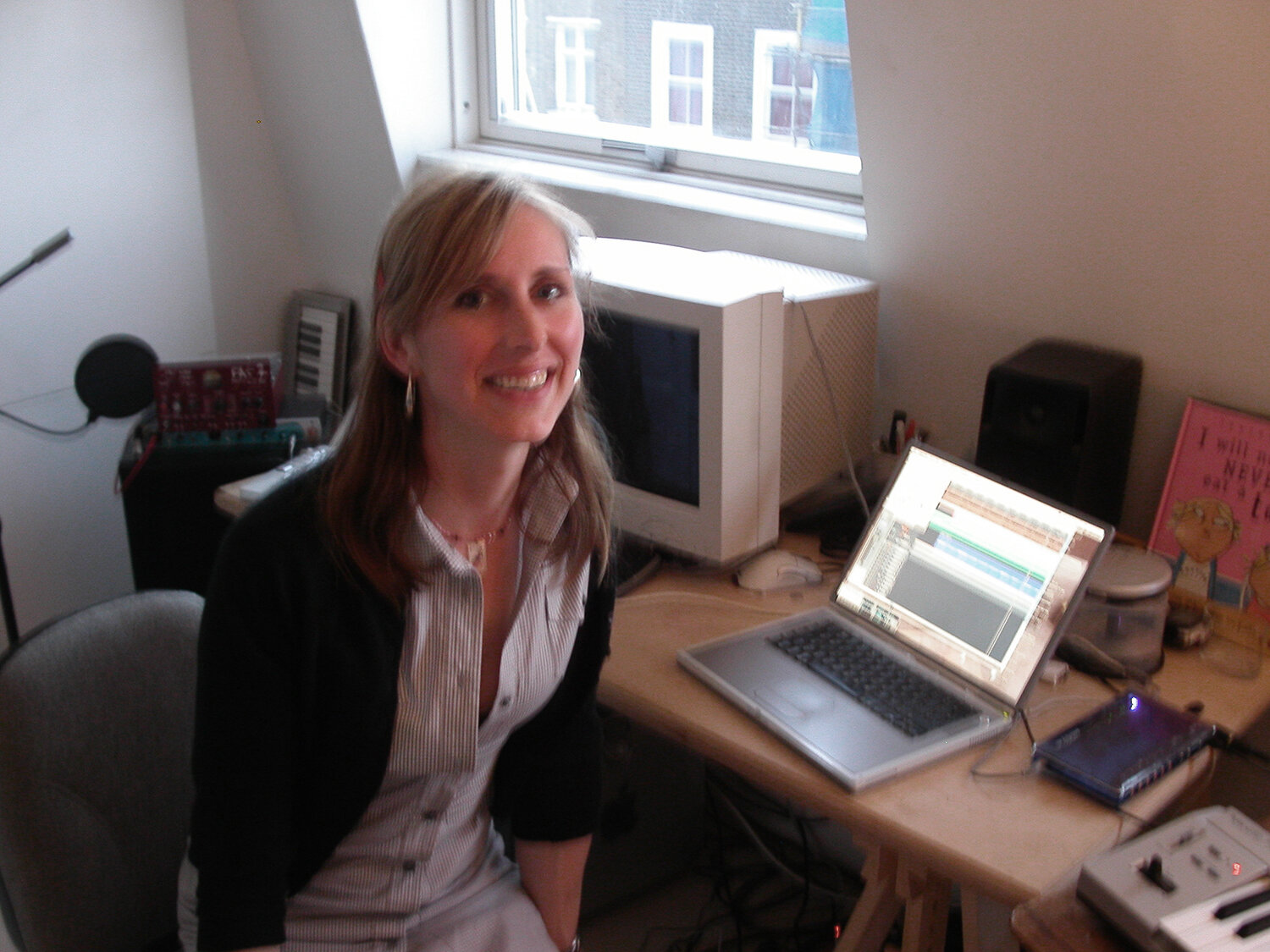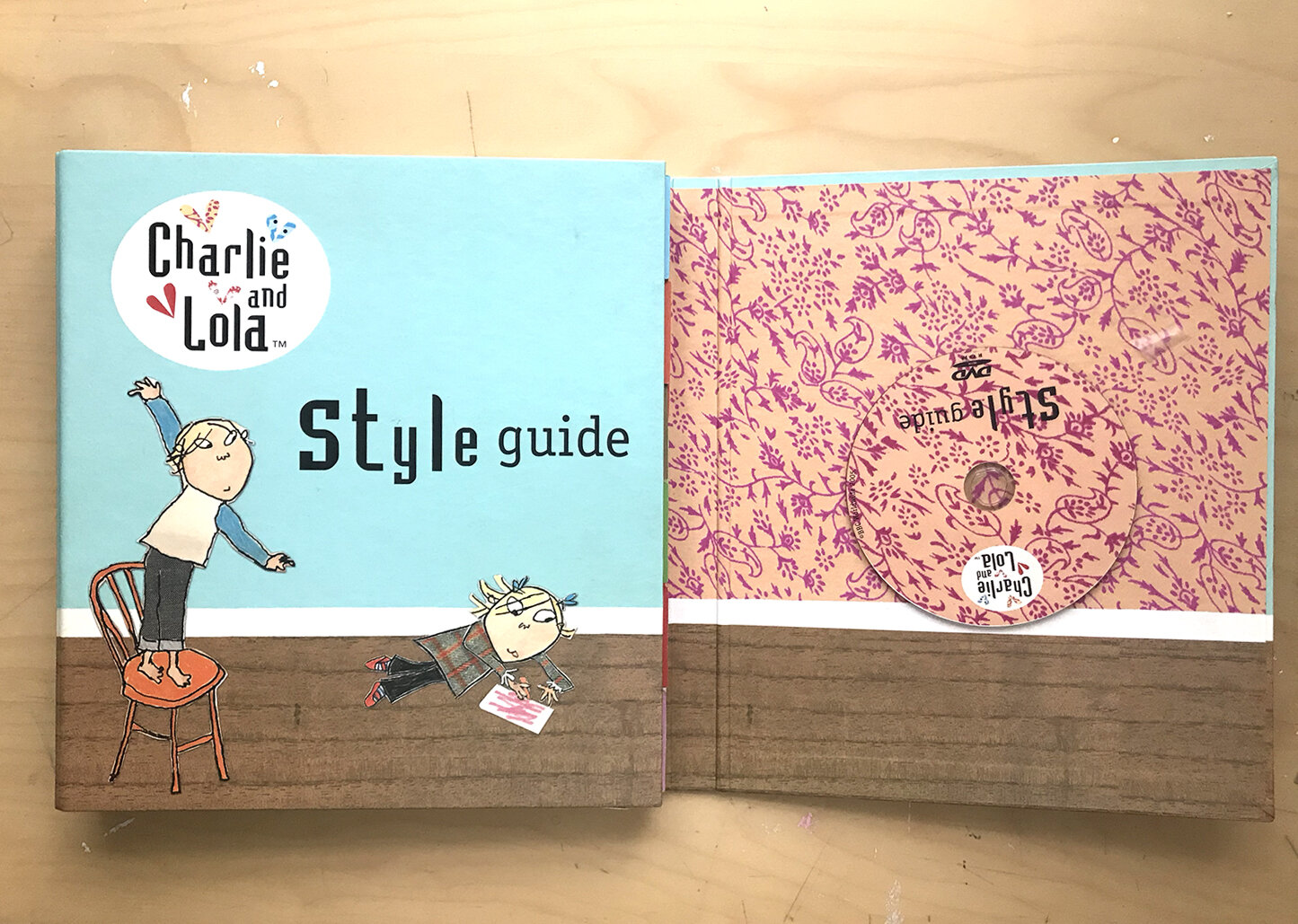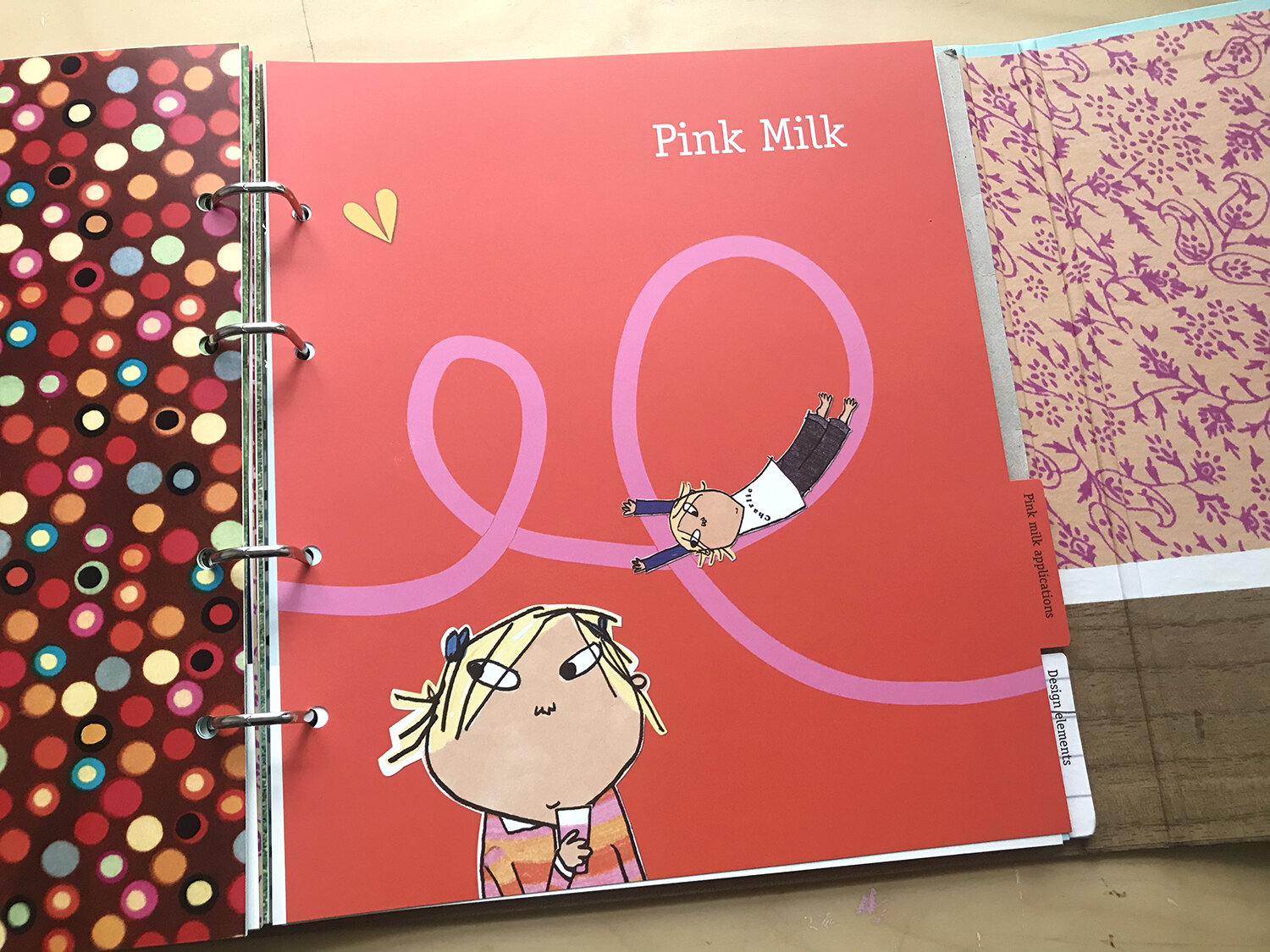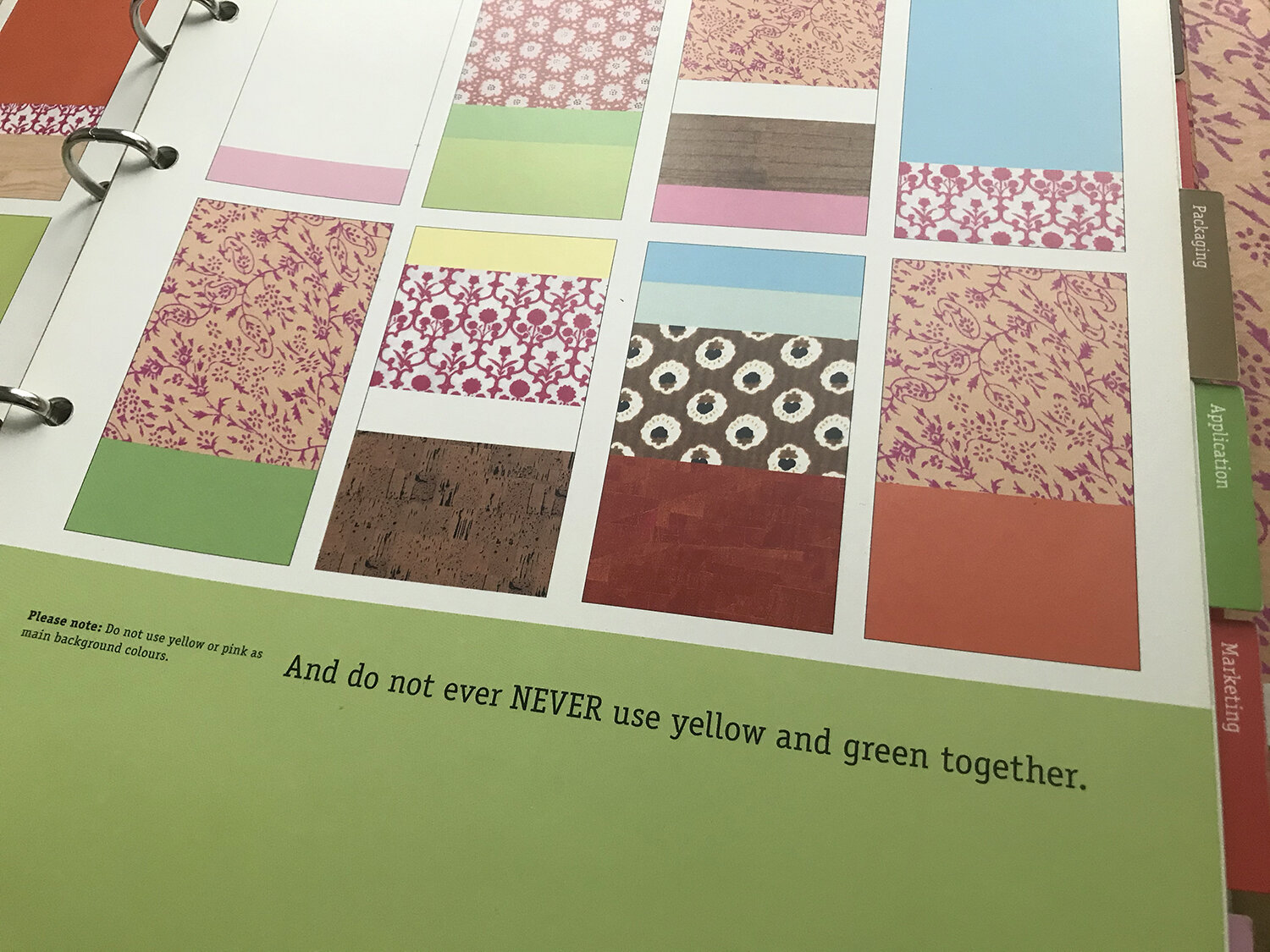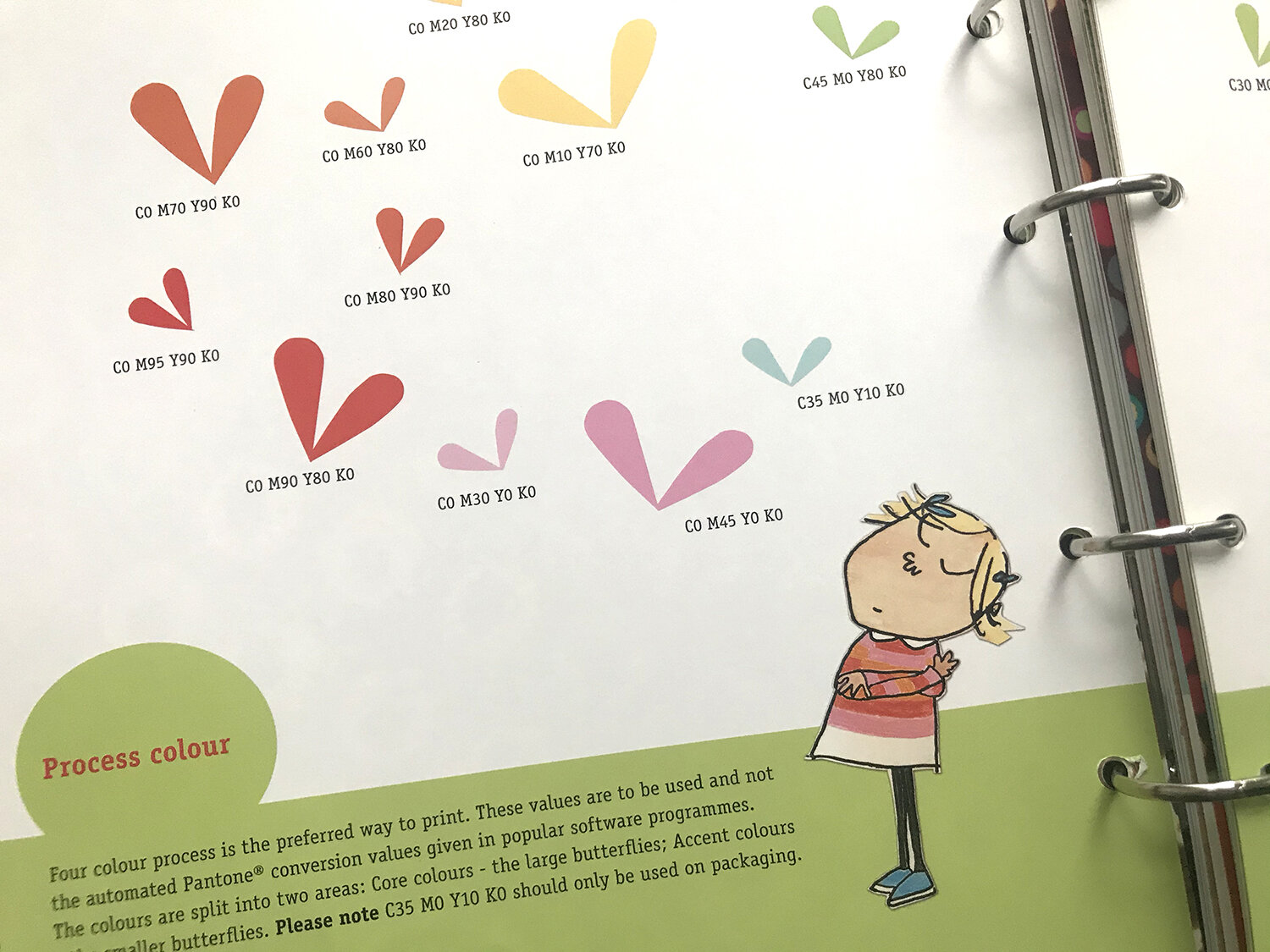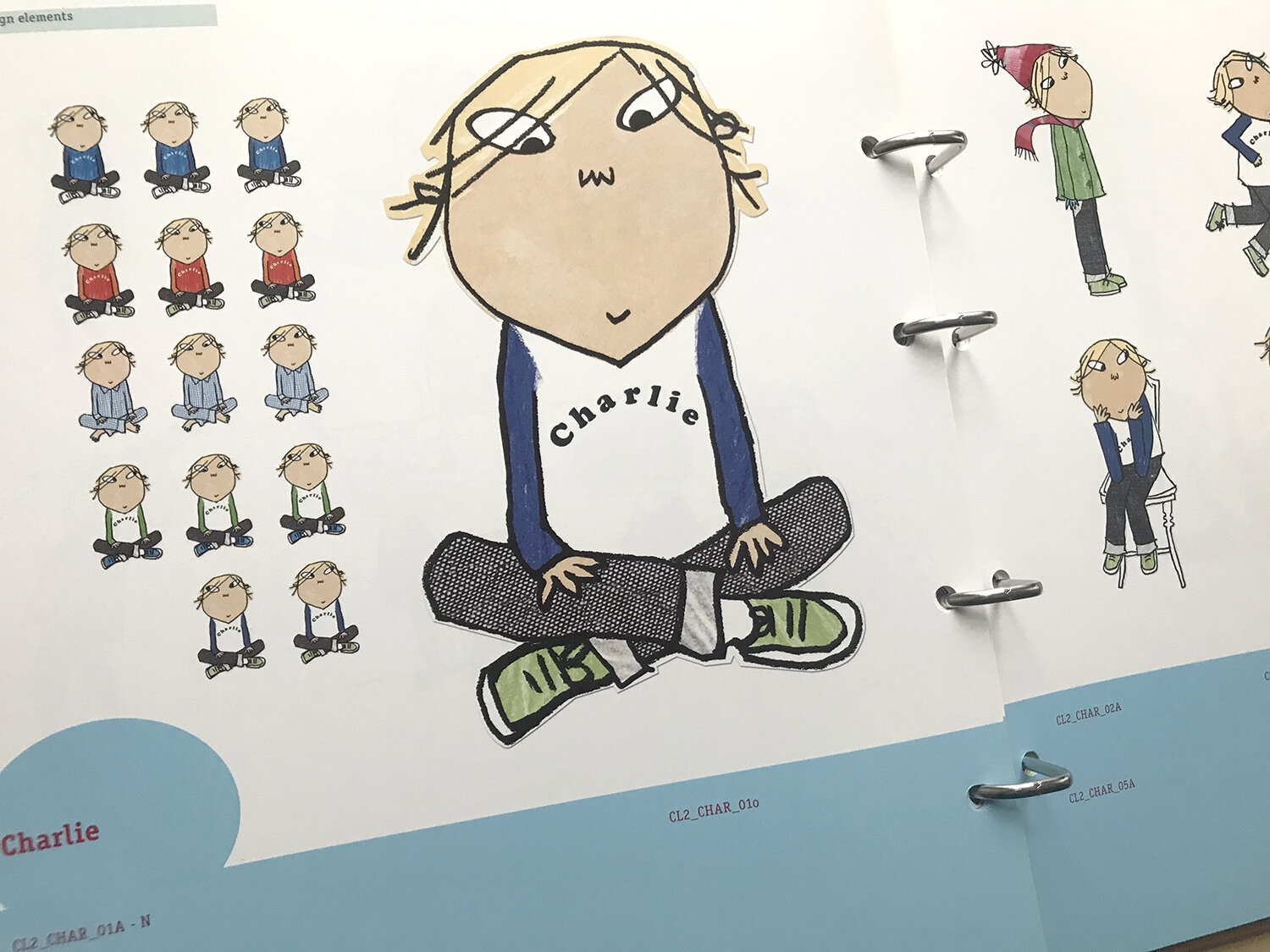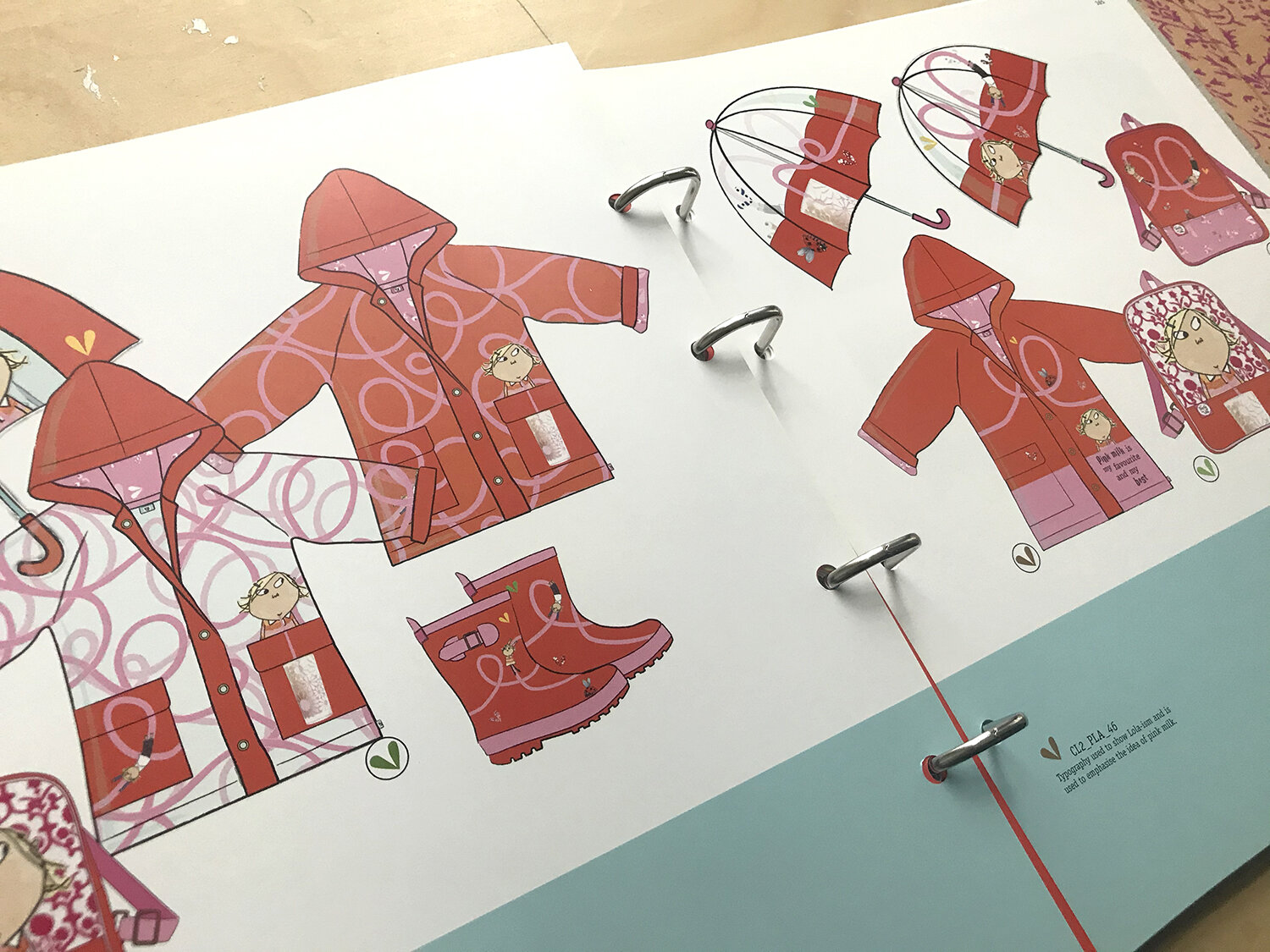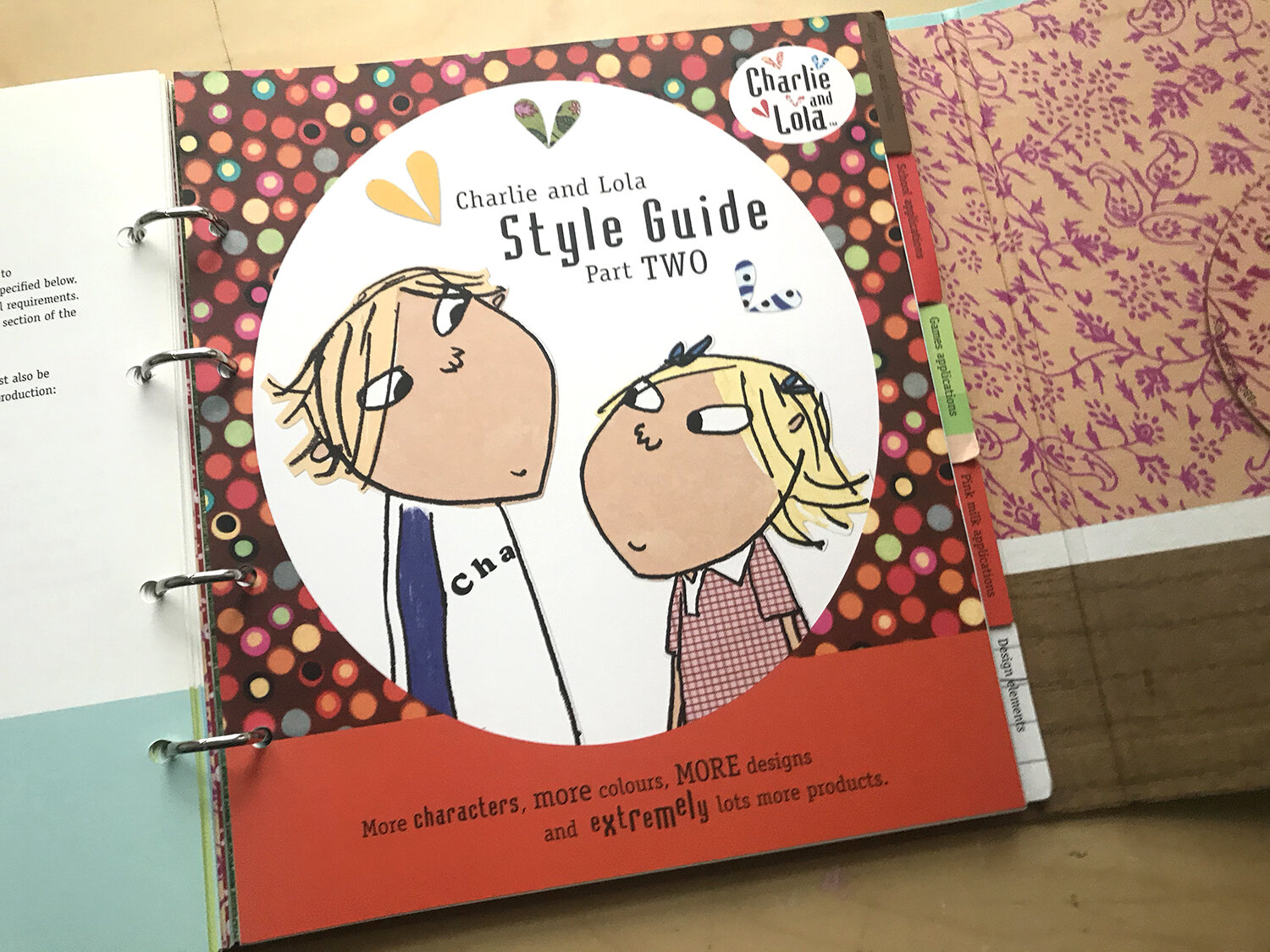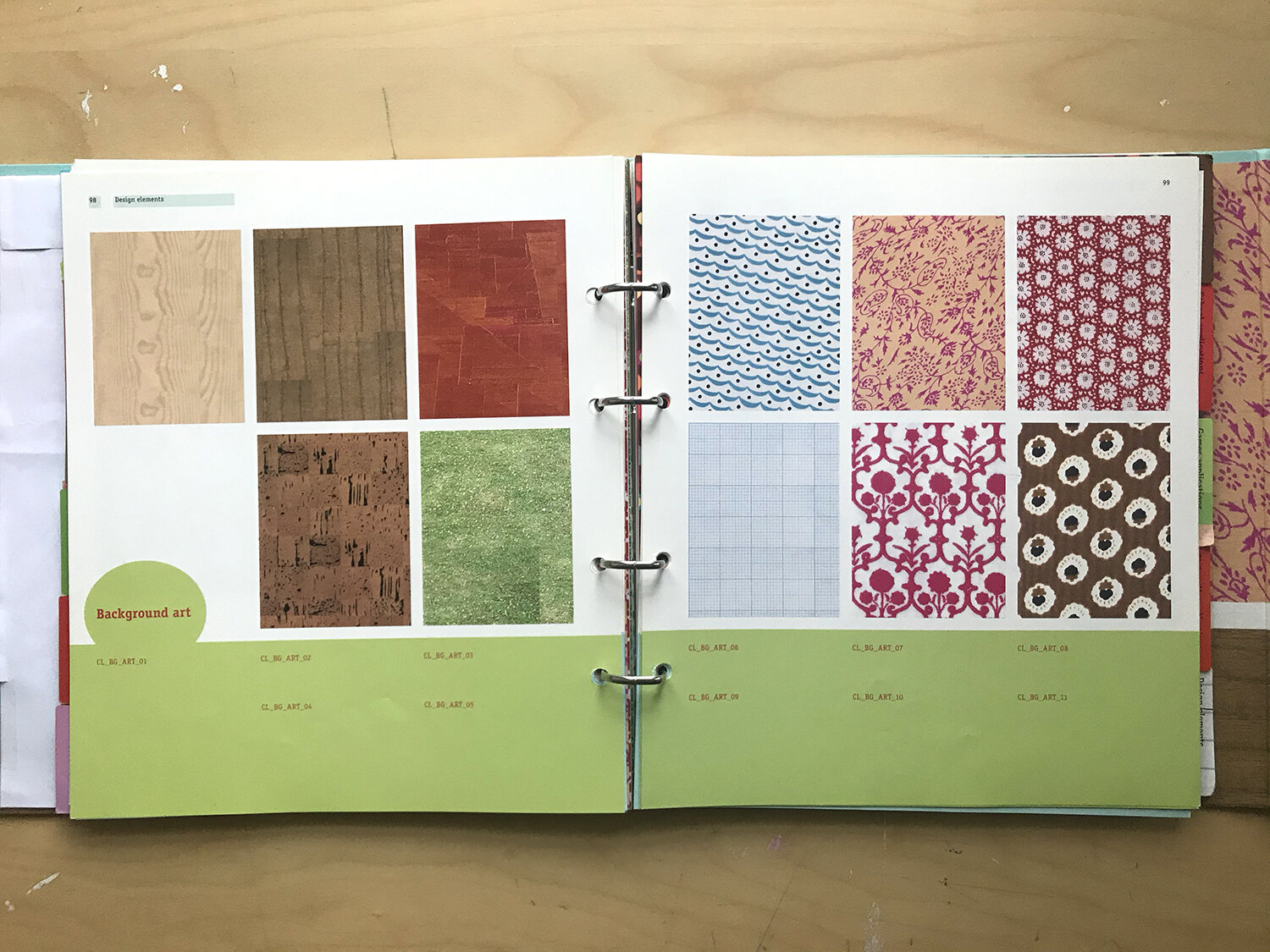TV show images (as seen here on TV) courtesy TigerAspect Productions.
It took me a while to come round to the idea of putting Charlie and Lola on TV, I felt there was a lot to lose if it wasn’t right.
The most important things to me were the following:
I felt it would only work if the characters had real children’s voices –
it’s what makes the dialogue convincing and the language charming.
I wanted Charlie and Lola to have the same cut-out paper look as they do in my books – they belong in a paper world.
I wanted the music to have a particular retro (1970s) feel. It needed to be reasonably sophisticated, something which hopefully doesn’t drive adults crazy if they hear it in the background.
I wanted to make sure that we dealt with the everyday things that a four year old and a seven year old encounter – the episodes should tackle tiny subjects. Finally, I wanted to work as a consultant on the show.
I chose to work with Tiger Aspect because I liked the two producers I met, Claudia and Chris. They were very open minded about what was possible, very keen to do something different and this really appealed to me. Claudia went on to produce the show and did a wonderful job.
As a test I recorded my friend’s 4 year old daughter Maisie on my dicta-fone and then got my musician friends, Soren and Tom to put her voice together with some of their music. The two went together beautifully and perfectly captures the mood of Charlie and Lola. When I heard it I felt sure it would work.
What I did on the show
I am often asked how the show is made, and did I do all the drawings and write all the scripts – so I will try to quickly explain.
My involvement with the scripts…
The first thing that happened: The producer, the director, the script editor, me and a team of about eight writers would meet and discuss storylines for the show.
Then the writers would go away and write up a brief outline of each story idea to explain what the episode was about. They would send these back to me, the producer and the script editor, and we would suggest things and make changes. The writers would read our notes and then write a treatment (a treatment goes into a lot more detail and is divided into acts and scenes). The treatment was sent back to us and we would make suggestions and changes.
Then the writers would write the first draft of a script, send it back and we would check it and make any changes.
Finally I would go through the script making dialogue changes so that the characters sounded like Charlie and Lola.
The voices…
Once we had the scripts, the producer and director would record the children’s voices.
The storyboard…
Next the script was given to a storyboard artist who translated the words into rough pictures.
The storyboard: showing the idea for each shot in relation to the dialogue.
The animatic
The voices were then put together with the storyboard to create a very rough animation so the director could see how it would play as a ten minute episode. This is an animatic made from the storyboard:
My involvement with the design
The designers would look at the storyboard and work out exactly which locations and props and characters would be appearing in the episode. They would hand me a list of things they needed me to draw from scratch and we would discuss things that they had designed and drawn in my Charlie and Lola style – sometimes these were spot on, sometimes we had to make changes. Because at the time of making the show I’d only written and illustrated three Charlie and Lola picture books I needed to do a lot of drawing.
For example what did Charlie and Lola’s home look like from the outside – so I drew their block of flats, and an idea of what the lift looked like:
What did Charlie’s friend Marv look like?
What did his dog look like?
What kind of coat did Charlie wear?
These things weren’t too difficult because I already knew in my mind how they looked (when I am thinking up stories I think in pictures). The hard bit was drawing things which I had never imagined – for example, what did snow look like in Charlie and Lola world? (I chose to do it as paper cut-out snowflakes because they live in a paper world). I drew many things, from lamps and furniture to outfits, animals and playgrounds. Over the four years we built up a huge library of drawings and the designers got very good at imitating my style and guessing how I might draw something.
The animation
Once the design was done the show could be animated. There were several teams of animators all working on different episodes, the director overseeing all of them. It was wonderful to see the drawings come to life.
TV frame formats (in red) help the designer position the background artwork for multiple shots in a single scene.
The music
The musicians wrote a musical score to fit the action and this immediately added energy to the episode. There were about fifty people working on the show, editors, animators, storyboard artists, musicians, designers, writers, the director, the producer, production people and many more. It was a big operation and during those five years eighty episodes were made.
Photos © Munk&Dyson/milkmonitor.com
The style guide was produced by Rangeplan (London).
The Style Guide
Once the show was in production we had to make a style guide which is like a visual dictionary of all things Charlie and Lola. It contains information on things like colour palettes, typography, designs for clothes and china, party-ware, wrapping paper and more. This style guide was given to the companies who would go on to produce Charlie and Lola things, from cake tins to tights. For a while I looked at everything that came in, and worked with the production team checking that all the products looked ‘right’.
The Style Guide is an actual book of reference on how to use Charlie and Lola on products, with visual suggestions and rules.
There are now hundreds of different Charlie and Lola related things; crockery, stationery, clothes, toys, bedding. I really enjoyed working on these. As a child I loved the Snoopy comic strips and television show and I loved that I could own part of this world myself. I still have some of the things I was given or saved up for – they became very important to me when I was small.
My childhood Snoopy toy.
It was always my intention and great hope that, as far as possible, all the things relating to Charlie and Lola would be of a high quality, nicely designed – affordable things you would want to keep. Some things have worked out better than others, some things I am not keen on at all, mostly I am very pleased – this is one of my favourites.
This hotwater bottle is a particular favourite.

